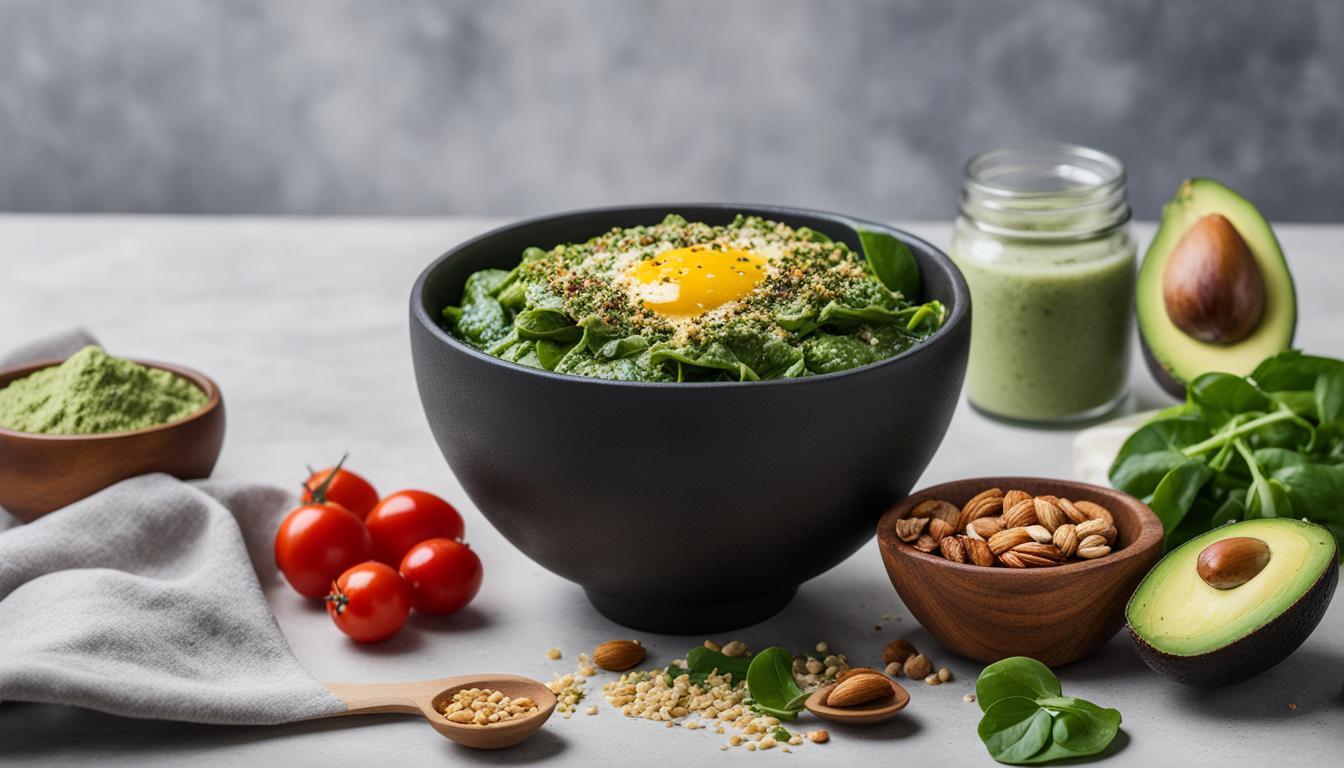Keto Kimbap Uncovered: The Ultimate Guide to Crafting Perfect Low-Carb Rolls!
Brief Overview of Keto Kimbap
For those new to the keto scene, keto kimbap is a delightful twist on the traditional Korean dish, offering all the flavors of this beloved comfort food but without the high carb content. By substituting the rice with cauliflower rice or other low-carb alternatives, keto kimbap has gained immense popularity in the ketogenic diet community for its flavorful, satisfying, and low-carb nature.

Benefits of Keto Kimbap
One of the most exciting aspects of keto kimbap is its alignment with the ketogenic diet’s principles. Traditional kimbap usually contains high-carb ingredients like rice and sweetened rice vinegar, which are not keto-friendly. However, keto kimbap substitutes rice with low-carb alternatives like cauliflower rice, making it significantly lower in carbs. Additionally, the incorporation of healthy fats from ingredients like avocado and salmon further enhances its nutritional profile. This helps to keep you feeling fuller for longer and supports your body’s ketosis state.
Now, let’s dive deeper into the tremendous health benefits of keto kimbap and why it’s an excellent addition to your keto meal plan.
Ingredients for Keto Kimbap
If you’re looking to make keto-friendly kimbap, you’ll need some key ingredients. Swap out traditional rice for cauliflower rice, and include ingredients such as avocado and protein sources like cooked chicken, canned tuna, or smoked salmon. These keto-friendly alternatives will ensure that your kimbap rolls are low in carbs and high in healthy fats.
Detailed Instructions for Keto Kimbap
Are you ready to create your very own keto-friendly kimbap? Let’s dive into the step-by-step process for assembling this delicious low-carb roll. Here’s what you’ll need:
- Keto-friendly rice alternative (such as cauliflower rice)
- Nori sheets
- Protein of your choice (like smoked salmon or cooked shrimp)
- Assorted vegetables (cucumber, avocado, and radish strips work well)
- Keto-friendly condiments (like sugar-free mayo or spicy mayo)
Start by laying a sheet of nori on a bamboo sushi mat. Spread a thin layer of the cauliflower rice on the nori, leaving a small border at the top edge. Arrange your chosen protein and vegetables in a line, then carefully roll the kimbap using the sushi mat, applying gentle pressure to create a tight, uniform roll. Slice and serve with your favorite keto-friendly dipping sauce. Enjoy your homemade keto kimbap!
Ideas for Customizing Your Keto Kimbap
When it comes to keto kimbap, the possibilities for customization are endless! You can switch up the fillings to suit your taste and dietary preferences. For a veggie-packed option, consider using cucumber, avocado, or bell peppers. If you prefer some protein, opt for smoked salmon, crab meat, or cooked chicken. For a spicy kick, add kimchi or gochujang sauce. You can also substitute the rice with cauliflower rice to keep it low-carb. Get creative and tailor your keto kimbap to your personal preferences for a truly satisfying meal!

Detailed Nutritional Information of Keto Kimbap
When it comes to keto kimbap, it’s not just about the amazing taste and texture, it’s also about the impressive nutritional content. A single serving of keto kimbap typically contains around 200-250 calories, making it a satisfying yet low-calorie option. The macros are perfectly balanced for a keto diet, with around 20-25 grams of fat, 8-10 grams of protein, and only 5-7 grams of net carbs. Moreover, keto kimbap is packed with essential nutrients like vitamin A, vitamin C, vitamin K, and fiber, making it a nutrient-dense choice for your ketogenic lifestyle.
Helpful Tips for Making Perfect Keto Kimbap
Making keto kimbap at home can be a delightful experience, and with the right tips and tricks, you can ensure its success. Here are some practical advice and tips to help you craft the perfect low-carb rolls:
1. Use Cauliflower Rice: Instead of regular rice, swap it out with cauliflower rice. It’s low in carbs and works beautifully as a keto-friendly alternative.
2. Choose the Right Fillings: Opt for keto-friendly fillings such as avocado, cucumber, smoked salmon, and other low-carb ingredients to keep your kimbap in line with your dietary goals.
3. Invest in a Good Bamboo Mat: A bamboo mat is essential for tightly rolling your kimbap, keeping all the delicious fillings in place.
4. Practice Makes Perfect: Don’t get disheartened if your first attempt isn’t flawless. Like any skill, making kimbap takes practice, so keep at it!
FAQ About Keto Kimbap
As keto kimbap gains popularity, you might have a few common questions about this delicious low-carb dish. Let’s uncover some answers to help you make the most of your keto kimbap experience.
Storage Tips: Wondering how to store your keto kimbap? The best way is to wrap it tightly in plastic wrap and store it in the refrigerator. This will help maintain its freshness for up to 2-3 days. Avoid freezing, as it may affect the texture of the kimbap.
Serving Suggestions: When it comes to serving keto kimbap, there are endless possibilities. Pair it with a side of kimchi or serve it with a drizzle of sesame oil for an extra burst of flavor. You can also enjoy it with a spicy gochujang dipping sauce for a delightful kick!
Conclusion
In summary, keto kimbap is a versatile and delicious option for those following a ketogenic diet. Its low-carb nature, thanks to the substitution of rice with cauliflower rice, makes it a perfect addition to a keto lifestyle. Packed with healthy fats and protein, keto kimbap offers a satisfying and nutritious option for anyone looking to enjoy the flavors of Korean cuisine while staying in ketosis.


